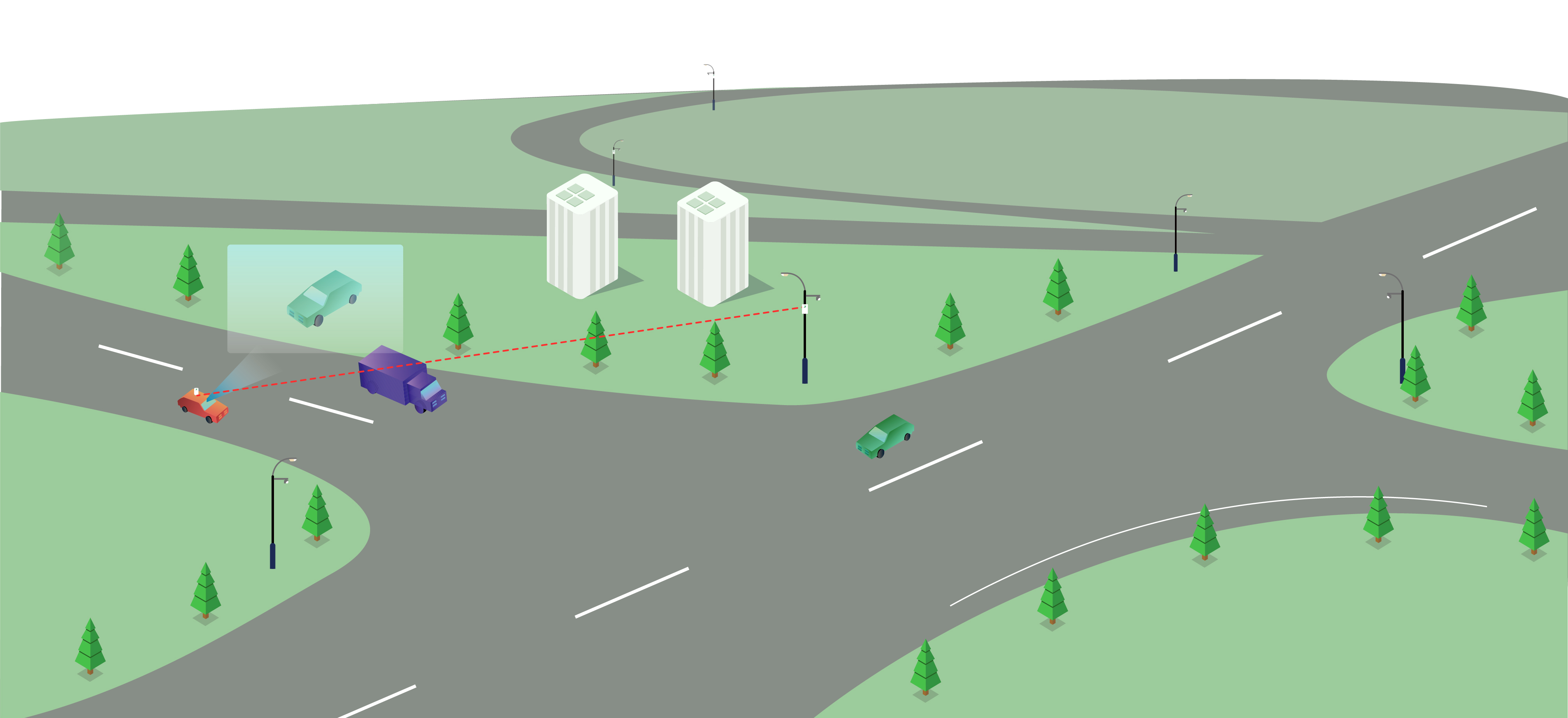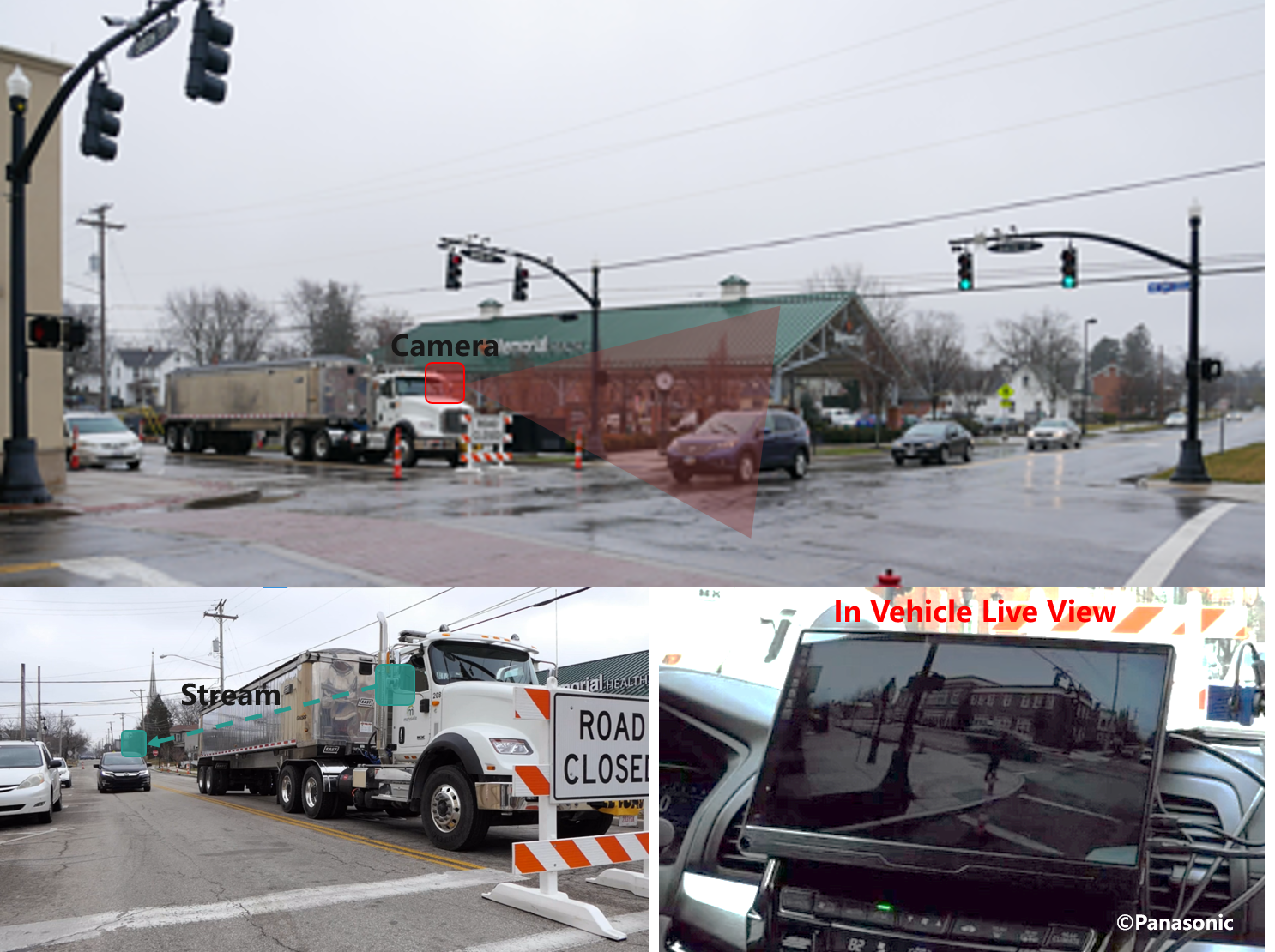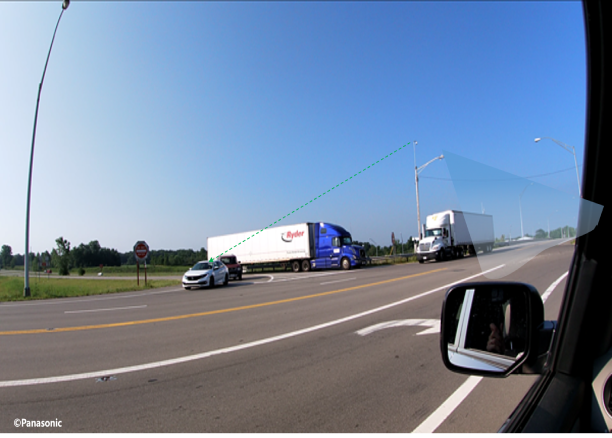Challenge
The vehicle networking safety projects aimed to let drivers to know surrounding traffic conditions and eliminate potential blind spots by “raw sensor data sharing” of low-latency, high resolution image data. The common civil wireless communication bands are quite crowded and existing V2X technologies have bandwidth limitations so it is difficult to meet the transmission demands of vehicle networking, which need a stable and fast data transmission.
Solution
We cooperated with Panasonic to install 60GHz mmWave devices on testing vehicles and the light pole, connecting with cameras and dashboard. When the testing vehicle approaches the intersection, the mmWave device on vehicle connected automatically, and the mmWave system provides a real time view of the oncoming traffic displayed live on the dashboard, so the driver can judge in advance and pass the area safely.

Results
✔ The camera captures real time video feed on oncoming traffic in the vehicle blind spot, and transmits this video feed to the vehicles approaching the intersection through the mmWave device. On the testing vehicle, the mmWave receives the transmission and displays the information on the dashboard area, so the driver can get the blind spot information in time.
✔ We used the 60GHz band, which is not interfered by other wireless bands, that ensures the signal transmission stability and low-latency, and avoid issues caused by signal interference or signal interruption.
✔ The wireless transmission distance of mmWave devices is more than 1km, which gives drivers enough time to predict in advance and improves traffic safety.

5G mmWave technology is one of the core components of vehicle networking technology, which can realize an instant communication with millisecond-level transmission latency between vehicles and between vehicle and ground. The research on connected vehicle safety technology has the potential to reduce collisions and save lives.


